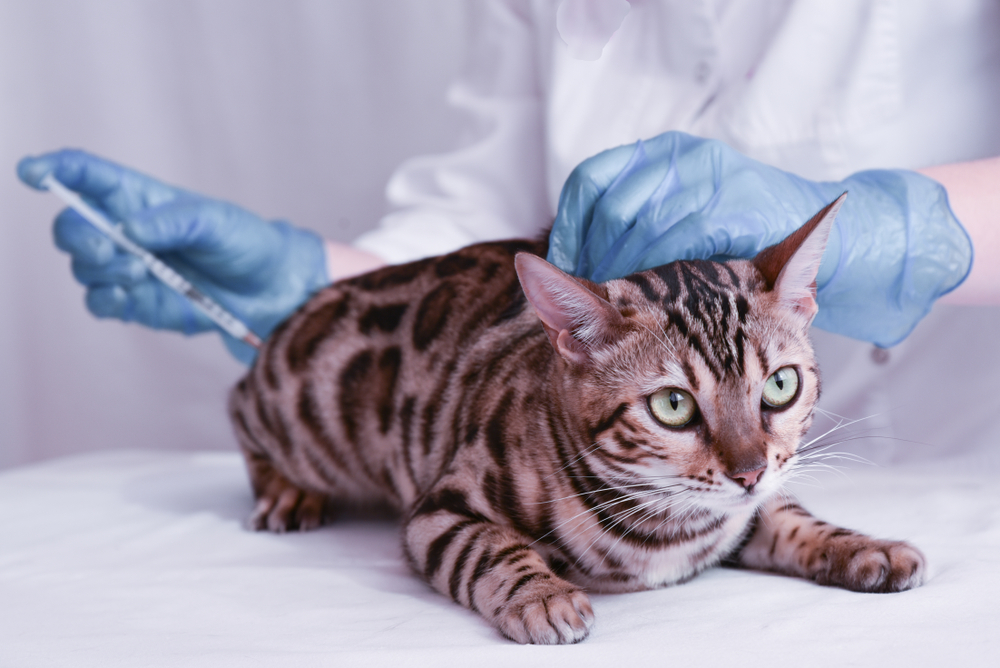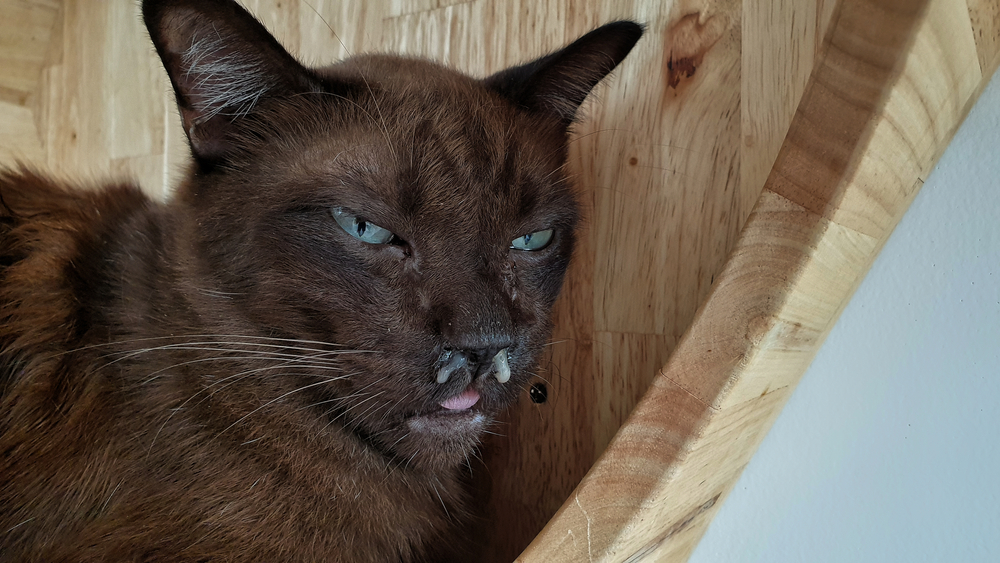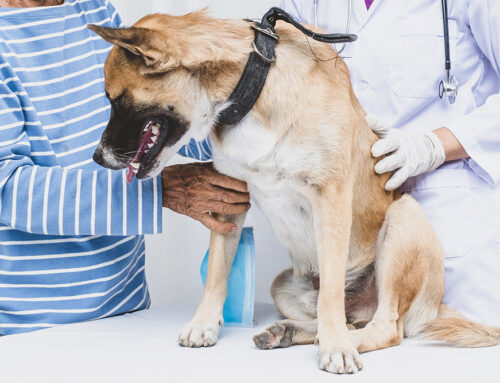Respiratory infections are common reasons for feline veterinary visits. Respiratory pathogens affect nearly all kittens, and as adults, they can experience periodic relapses. Learn to recognize your cat’s respiratory infection signs so you can implement simple home care measures and monitor your furry pal’s recovery by reading our Central Kentucky Veterinary Center team’s guide to feline respiratory infections.
What organisms cause respiratory infections in cats?
Respiratory pathogens include viruses, bacteria, fungi, and parasites, but the most common are two specific viruses: feline herpesvirus type I (FHV-1) and feline calicivirus (FCV). Around 97% of cats are exposed to herpesvirus at some point in their lives, which causes an initial respiratory illness that then becomes dormant in the body’s nerve cells. Randomly or during stressful times, the virus can reactivate, causing the cat to become sick again. Because of this, most infections in cats are at least partially attributed to FHV-1, but FCV may be more prevalent in certain populations.
Although viruses are primarily responsible for feline infections, bacteria can also play an important role. Chlamydia and mycoplasma species can cause infections on their own or may invade secondary to a virus. Bordetella, which causes kennel cough in dogs, may also contribute.
How do respiratory infections spread among cats?
Cats’ respiratory infections spread similarly to how people’s cold and flu viruses spread. Germs can become airborne when cats sneeze or cough and can also spread via close personal contact. In addition, if you come in contact with an infected cat, you can spread pathogens to another cat through the germs that remain on your clothing and hands. Respiratory infections spread quickly and easily through shelters, catteries, and feral cat colonies. Cats with immune system problems, such as feline immunodeficiency virus (FIV) or an endocrine disease, are more susceptible to chronic infections.
What are respiratory infection signs in cats?
Because respiratory infections spread so easily among cats, learn to recognize the signs so you can help your whiskered pal get relief as soon as possible. Respiratory infections in cats present with the following signs:
- Sneezing
- Runny nose
- Congestion
- Fever
- Mouth sores
- Red, swollen eye lining (i.e., conjunctivitis)
- Squinting
- Coughing
- Lethargy
- Difficulty breathing
- Poor appetite
How do veterinarians diagnose respiratory infections in cats?
Our Central Kentucky Veterinary Center team can diagnose a feline respiratory infection based on your furry pal’s history and a complete physical examination. We may order diagnostic tests if your cat fails to respond to standard treatments, exhibits severe signs, or has suspected lung involvement. Tests may include blood work to evaluate your cat’s overall health status, chest X-rays to check for pneumonia, or a conjunctival or nasal swab to identify the organisms causing the infection.
Are feline respiratory infections serious?
Many feline respiratory infections resolve on their own, typically in about 5 to 10 days. However, some infections linger for up to six weeks or can cause severe illness. If your cat develops mild respiratory infection signs, such as sneezing or a runny nose, but continues to eat well and behave normally, you can provide supportive care and monitor them at home. To help your cat feel better while their immune system fights a respiratory infection, follow these tips:
- Encourage rest and food intake
- Clean discharge from their eyes and nose
- Place them in a steamy bathroom to help loosen congestion
Signs that your cat’s infection is serious or has been complicated by bacteria include green or yellow nasal or eye discharge, complete appetite loss, extreme lethargy, and labored or open-mouth breathing. Seek veterinary care if your furry pal develops these serious illness signs.
What are the treatment options for feline respiratory infections?
In addition to supportive home care, some cats require medical treatments to recover. Our team administers most feline respiratory infection treatments on an outpatient basis, but if your cat is severely ill, we may hospitalize them for a few days. Treatments may include the following:
- Oral or injectable antibiotics
- Supplemental fluid therapy
- Nebulized saline breathing treatments
- Supplemental oxygen
- Temporary feeding tube
- Pain medications
- Eye drops or ointments
Do vaccines prevent respiratory infections in cats?

Vaccines are available to protect cats against the two most common respiratory viruses: herpesvirus and calicivirus. Our veterinary team recommends all cats receive an initial feline viral rhinotracheitis calicivirus panleukopenia (FVRCP) vaccine series and boosters every one to three years. Cats in shelters or other high-risk populations may benefit from the vaccine’s nasal version, which becomes effective more quickly than the injectable vaccine versions.
Vaccination does not completely prevent viral respiratory infections in cats. However, vaccinated cats experience fewer mild infections. In addition, you can help ensure your whiskered pal’s immune system functions optimally by reducing their exposure to stress.
Most cats experience periodic respiratory infections, but when you learn to identify early signs and provide supportive care, you help ensure your whiskered pal has a speedy recovery. Contact our Central Kentucky Veterinary Center team if your cat develops respiratory infection signs or to schedule your furry pal’s next routine vaccination visit.







Leave A Comment